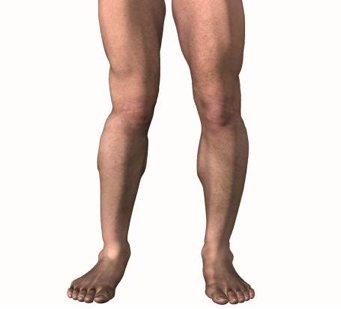Medicare Documentation: Part 1 Subluxation and the Initial Visit
 Tuesday, July 17, 2012 at 10:55PM
Tuesday, July 17, 2012 at 10:55PM 
Joe Betz, B.S., D.C
ICA Board Member,
PCCRP Board Member
Private Practice Boise, ID
Idaho Chiropractic Association Board Member
CBP Instructor
&
Jason Jaeger, DC
ICA Assembly Representative for NV
Nevada Chiropractic Association Board Member
CBP Instructor
Private Practice Las Vegas, NV
INTRODUCTION
Few things in daily practice are more time consuming and seemingly non-productive than time spent on documenting daily visits of patients. Perhaps the most concerning aspect of documentation pertains to the regulations on how to document appropriately for the Medicare daily visit. Doctors are being audited at alarmingly high rates. Audits from the Office of the Inspector General can result in the Chiropractor owing >$300, 000…all due to poor records. This isn’t exactly what one would consider malicious fraud, but it can result in serious repercussions.
Subluxation Documentation
The good news is that Medicare has defined what elements a clinical record from a chiropractor must contain for both the “Initial” and “Subsequent” encounters.1 It should first be stated that covered benefits for chiropractic are “only for treatment by means of manual and instrument manipulation of the spine to correct a subluxation.”1 Of note is the fact that Medicare requires the term, “Subluxation” be used in the treating chiropractor’s documentation. Exclusive use of other terms such “fixation” is not adequate.
A subluxation may be demonstrated by an X-ray and/or by physical examination. Although there are exceptions, the X-ray should have been taken at most 12 months prior to or 3 months following the initiation of a course of chiropractic treatment. Demonstrating the presence of a subluxation by physical examination is described in detail. The “PART” format is the acronym to remember the essential elements of the physical exam to demonstrate a subluxation: “Pain/tenderness evaluated in terms of location, quality, and intensity; Asymmetry/misalignment identified on a sectional or segmental level; Range of motion abnormality (changes in active, passive, and accessory joint movements resulting in an increase or a decrease of sectional or segmental mobility);and Tissue, tone changes in the characteristics of contiguous, or associated soft tissues, skin, fascia, muscle, and ligament.” 1
The manual continues, “To demonstrate a subluxation based on physical examination, two of the four criteria mentioned under “physical examination” are required, one of which must be asymmetry/misalignment or range of motion abnormality.”1 The history recorded in the patient record should include the following:
“Symptoms causing patient to seek treatment; Family history if relevant; Past health history (general health, prior illness, injuries, or hospitalizations; medications; surgical history); Mechanism of trauma; Quality and character of symptoms/problem; Onset, duration, intensity, frequency, location and radiation of symptoms; Aggravating or relieving factors; and Prior interventions, treatments, medications, secondary complaints.”1
Subluxation Documentation Requirements
“The following documentation requirements apply whether the subluxation is demonstrated by x-ray or by physical examination [Emphasis Added]:
- Description of the present illness including: Mechanism of trauma; Quality and character of symptoms/problem; Onset, duration, intensity, frequency, location, and radiation of symptoms;
DISCUSSION
It is important to note that individual states may have additional regulations described by their Medicare Administrative Contractor (MAC) in the form of a Local Coverage Determination (LCD).
The language used in the Medicare Benefit Policy Manual is precise in what is required. If you are not following Medicare’s described documentation requirements for the Initial visit on each and every Medicare patient, you are vulnerable to poor performance “when” (not “if”) they audit your records. You must own this information or suffer the consequences.
Electronic Health Record (EHR) systems that are properly designed will aid the chiropractor in documenting the Initial visit for a Medicare visit appropriately. This is perhaps the single most important aspect of choosing the proper EHR. Who are the clinical advisors? Do they understand the reality of Medicare documentation requirements? Be sure you can produce compliant notes, quickly and with confidence.
A system such as this would simplify the doctor’s life, the staff requirements. A system like this would set the clinic using it, above and apart from the rest.
SUMMARY
To realize this unprecedented professional standard now required by Medicare, CBP has partnered with a well known-respected EHR Company to develop a system specifically for CBP and corrective care doctors. This system will debut at the 2012 CBP Annual conference in Scottsdale, AZ at the Boulders Resort. See the annual conference ad in this issue or go to www.idealspine.com for registration.
References
1. Medicare Benefit Policy Manual. Chapter 15 Section 240. Chiropractic Services.
 CBP Seminars | Comments Off |
CBP Seminars | Comments Off |  Chiropractic,
Chiropractic,  documentation,
documentation,  medicare,
medicare,  subluxation
subluxation 




